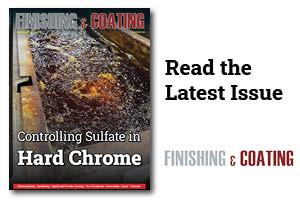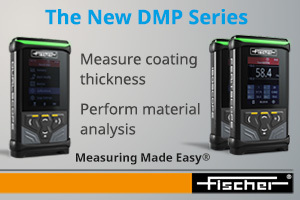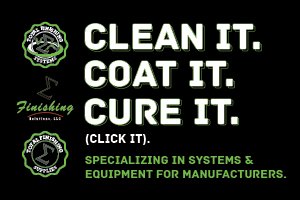At just over 8,000 square feet, Plateronics Processing in Chatsworth, California, isn’t going to compete with the bigger shops that can finish large aerospace parts in massive quantities.
 Keshav KumarOwner Keshav Kumar is well aware of his shop’s size limitations, but he is also keen on the advantages of having smaller tanks.
Keshav KumarOwner Keshav Kumar is well aware of his shop’s size limitations, but he is also keen on the advantages of having smaller tanks.
”Our tank size generally, I would say the average is around 100 to 300 gallons,” Kumar says. “But we have about 28 to 30 processes in that small area, which is a huge advantage for us with many customers.”
Plateronics Processing offers anodizing, chem film passivation, electroless nickel, and various other plating substrates, including gold, silver, tin, and zinc. Kumar purchased the company five years ago because of its diversity in application processes.
Focusing on Technologically Advanced Processes
 Plateronics tank size generally average around 100 to 300 gallons. ”We have tried to stick into the more technologically advanced areas where we can add more value to our customer rather than going after bigger volume,” he says.
Plateronics tank size generally average around 100 to 300 gallons. ”We have tried to stick into the more technologically advanced areas where we can add more value to our customer rather than going after bigger volume,” he says.
For example, a typical part of the aerospace giant Boeing might undergo four or five finishing processes. Kumar says this makes Plateronics Processing the perfect partner for many aerospace manufacturers who need various finishes on their components.
“ What we have seen is if you want to do quality and complicated work, the one finishing process may not cut the deal,” he says. “ If you have one process, you can't win it.”
The diversity and variety in processes are numerous at Plateronics and its approvals. The list of those include:
- Anodizing: Mil-A-8625, Type II, Cl 1 and 2, AMS 2471, AMS 2472, SCGPS 06026
- Chemical Film on Aluminum: Mil-C-5541, Mil-DTL-5541; Mil-DTL-81706; Cl 1A and 3, AMS 2473, AMS 2474; AMS 2477
- Passivation: AMS-QQ-P-35, Type II, VI, VII, VIII; ASTM A-967; ASTM A380; Mil-Std-5002
- Electroless Nickel: AMS-C 26074, Cl 1,2,3,4 Grades A,B,C; AMS 2404; AMS 2405; SCGPS 06025; ASTM B733; SCGPS 06013
- Gold Plating: Mil-G-45204, Mil-DTL-45204; Type II, Gr C, I and III, Gr A; ASTM B488; AMS 2422; SCGPS 06024
- Silver Plating: QQ-S-365, Type I, II, III, Gr A, and B; AMS 2410; AMS 2412; ASTM B700
- Hard Anodize: Mil-A-8625 Type III, Cl 1 and 2; AMS 2469
- Nickel Plating: AMS-QQ-N-290, Cl 1 and 2, Grades A thru G; AMS 2424; Mil-P-27418; AMS2403; AMS 2423
- Tin Plating: Mil-T-10727, Type I; ASTM B545; AMS 2408
- Zinc Plating: ASTM B633, Type I, V, VI (clear, yellow, and black); AMS 2402
In addition, Plateronics is Nadcap, AS9100, and ISO 9001:2015 certified and has approvals from companies such as Boeing Space and Intelligence Systems, Eaton Aerospace, L3 Harris, Lockheed-Martin, Moog, Northrop Grumman, and Raytheon.
Adding Finishing to Six Other Manufacturing Companies
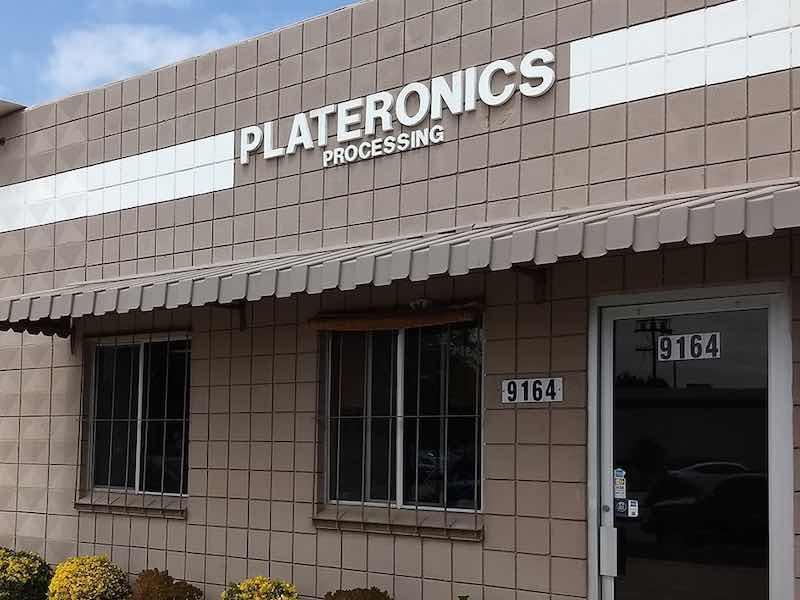 Kumar purchased the 60-year-old Plateronics Processing five years ago, which gave him his sixth manufacturing company. He also owns Prototype and Short-Run Services, a precision metal stamping company in a 20,000-square-foot Southern California facility, American Etching and Manufacturing located in Pacoima, CA and American Wire EDM, which has nearly 30 years of experience in this highly specialized field among others in areas of plastics Injection molding, metal heat treat and brazing.
Kumar purchased the 60-year-old Plateronics Processing five years ago, which gave him his sixth manufacturing company. He also owns Prototype and Short-Run Services, a precision metal stamping company in a 20,000-square-foot Southern California facility, American Etching and Manufacturing located in Pacoima, CA and American Wire EDM, which has nearly 30 years of experience in this highly specialized field among others in areas of plastics Injection molding, metal heat treat and brazing.
Being on the “customer” side of the finishing industry, as someone who hires platers and anodizers, has given Kumar a unique perspective on running his operation. One of the biggest lessons he has learned is to keep his finishing customers aware of their options to get the best coating possible.
”What customers are looking for are things that keep them ahead in the game sometimes,” Kumar says. “They may not be on top of some things that are changing. They may say, ‘I just want to anodize Type II,’ you can do sulfuric, boric, or chromic Type I, but you can also do Type II and III with chromic. If you specify that you only want chromic on drawings, then with time, you will be limited by your vendors because regulations change.”
With a background in physics and chemistry and a Ph.D., Kumar’s business career has led him through a photonics and medical device company before he started his own manufacturing company. He owns seven now and isn’t through adding more.
”The surprising part was that people never talk about how we can improve the processing. The majority of the time where it is spent is how to maneuver the regulatory requirements. And then you are just trying to be in existence more than anything else.”
“ I'm still in the process of acquiring companies in metal finishing and metal heat treaters,” Kumar says. “The goal is to buy more and keep upgrading because size matters with all these different regulations and increasing technological demand from customers. If you want to provide good service, quality, and technology, you can do it on a very small scale, but it's hard. You can also come with that niche with no competition, but it will take years before your process can get any certification.”
Business Scale is Crucial to Finishing Success
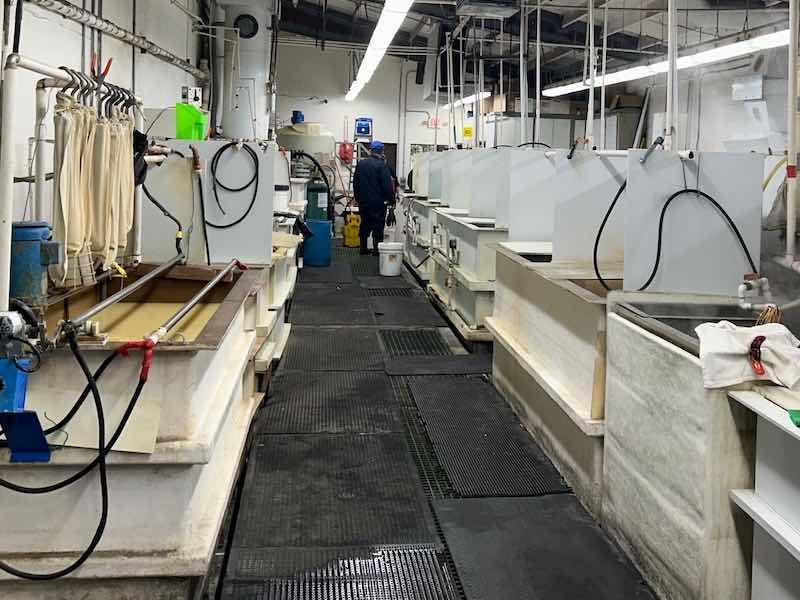 Scale is persistent in Kumar’s business philosophy, and he admits that he sees other finishing operations that should probably merge with another shop to size up and grow their businesses.
Scale is persistent in Kumar’s business philosophy, and he admits that he sees other finishing operations that should probably merge with another shop to size up and grow their businesses.
He recently became president of the Metal Finishing Association of Southern California after serving on the board for the last few years. He sees one way to grow the industry: possibly consolidating some of the shops to keep them viable and growing.
In the few years he has owned a finishing operation, he has seen that the industry focuses almost all its attention on staying ahead of regulations instead of improving its processes to better serve its customers in manufacturing.
Kumar says it has been an eye-opener since he joined the MFASC.
”The surprising part was that people never talk about how we can improve the processing,” he says. “The majority of the time where it is spent is how to maneuver the regulatory requirements. And then you are just trying to be in existence more than anything else.”
Helping Shop Owners Get More Value
Instead, Kumar hopes to spend his time leading the largest metal finishing chapter in the U.S., helping shop owners increase their company's value while improving customer service in the manufacturing sector.
“There is a need to make people understand the scale,” he says. “It doesn't matter how good you are or how good you do by your customer; if you don't have a scale, as an owner, you will stretch yourself so thin that it's very hard to enjoy what you do.”
Kumar says some of that thinking comes from family-owned finishing operations passed down over the years and given no thought to possibly merging or selling to a different entity to capture the scale needed to grow.
“Most of these businesses have been transferred from first generation to second and third generation,” Kumar says. “And now there's a new group of people in private equity who want to own these companies. However, when they transition to private equity without the technological know-how owner, they sometimes have no idea what they are doing. How would you sustain the company if somebody walks away or something happens?”
Kumar says passing the finishing company on to the next generation isn’t always the best solution, and the industry suffers.
“ It’s a matter of almost starting from scratch. I can add much more value to a company where the owner wants to retire. I can add a lot more value and make the life of people who have been there for 30 or 40 years a lot better quickly than hiring a new set of people.”
“Perhaps the father or second generation were pretty good with chemistry, engineering, and science,” he says. “As it got transferred from first to second, in some cases, it got better. But in a majority of the cases, you will find that it went to a non-technical owner with limited chemistry skill level. Between this dilution of understanding of the business, now you have this financial pressure where you don't have a scale to stay ahead of regulation or stay competitive in marketplace.”
Looking at More Shifts and Acquisitions
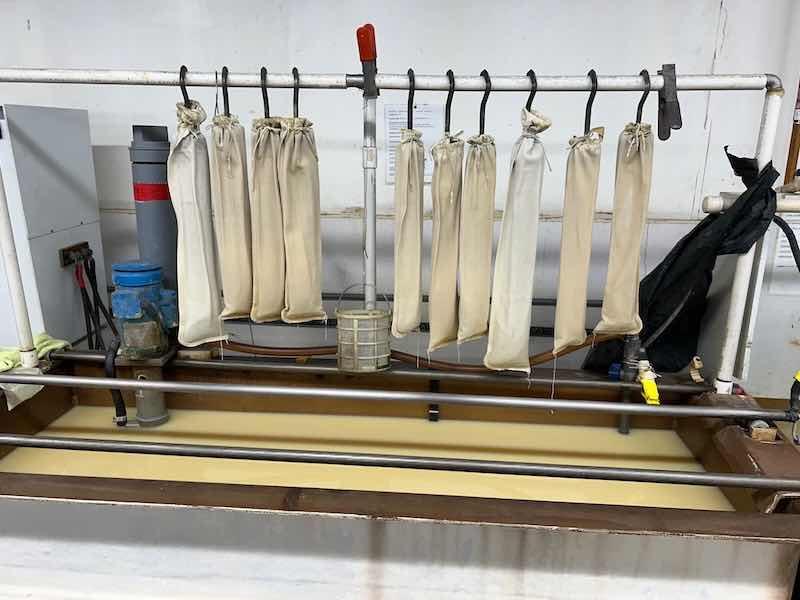 As for the scale of Plateronics Processing, Kumar says he is still looking for ways to grow the business despite its limited footprint, including acquiring other finishing operations.
As for the scale of Plateronics Processing, Kumar says he is still looking for ways to grow the business despite its limited footprint, including acquiring other finishing operations.
”We might add a second shift,” he says. “But because I don't have all the processes and all the sizes that I can process, priority-wise, if I can find someplace that is complimentary to what we do, I might acquire and expand that way.”
With a dearth of available labor, Kumar says adding a second shift would make it difficult to build a team that he is comfortable with.
“ It’s a matter of almost starting from scratch,” he says. “And I have limited time to do that kind of grassroots development. I can add much more value to a company where the owner wants to retire. I can add a lot more value and make the life of people who have been there for 30 or 40 years a lot better quickly than hiring a new set of people.”







